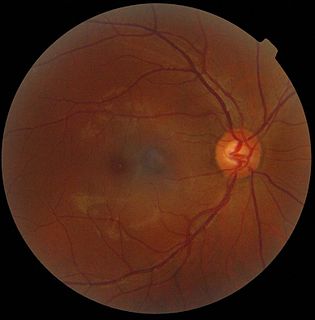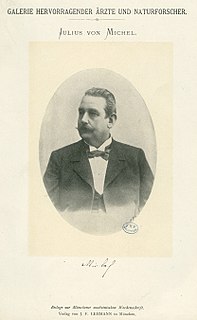
Alfred Bielschowsky (December 11, 1871 – April 5, 1940) was a German ophthalmologist. His specialty was physiology and pathology of the eye, particularly in regards to research of eye movement, space perception and diagnosis of oculomotor anomalies.
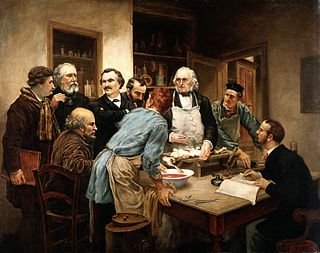
Physiology is the scientific study of the functions and mechanisms which work within a living system.

Pathology is concerned mainly with the causal study of disease.

Eye movement includes the voluntary or involuntary movement of the eyes, helping in acquiring, fixating and tracking visual stimuli. A special type of eye movement, rapid eye movement, occurs during REM sleep.
Contents
Bielschowsky was born in Namslau (Namysłów), Prussian Silesia. After attending the Königliches Katholisches Gymnasium of Glatz (Kłodzko), he studied medicine at the University of Breslau (Wrocław) and at the University of Heidelberg. At Heidelberg he was a student of ophthalmologist Theodor Leber (1840-1917). Afterwards he studied medicine at the University of Berlin, attending the lectures of Karl Ernst Theodor Schweigger (1830-1905) and graduating in 1893. He received his medical license in Leipzig on March 1 of the same year.

Namysłów(

Kłodzko is a town in south-western Poland, in the region of Lower Silesia. It is situated in the centre of the Kłodzko Valley, on the Eastern Neisse river.

The University of Wrocław is a public research university located in Wrocław, Poland. The University of Wrocław was founded in 1945, replacing the previous German University of Breslau. Following the territorial changes of Poland's borders, academics primarily from the Jan Kazimierz University of Lwów restored the university building heavily damaged and split as a result of the Battle of Breslau (1945). Nowadays it is one of the most prominent educational institutions in the region.
Bielschowsky subsequently studied and worked in the eye clinic at the University of Leipzig, receiving his habilitation in 1900 and becoming head physician of the clinic in 1906. While at Leipzig he worked under physiologist Ewald Hering (1834-1918), and with Franz Bruno Hofmann (1869-1926), he conducted studies of fusion and cyclodeviation in superior oblique muscle paresis. In 1912 Bielschowsky attained the chair of ophthalmology at the University of Marburg.
Habilitation defines the qualification to conduct self-contained university teaching and is the key for access to a professorship in many European countries. Despite all changes implemented in the European higher education systems during the Bologna Process, it is the highest qualification level issued through the process of a university examination and remains a core concept of scientific careers in these countries.

Karl Ewald Konstantin Hering was a German physiologist who did much research into color vision, binocular perception and eye movements. He proposed opponent color theory in 1892.
Franz Bruno Hofmann was an Austrian-German physiologist.
During World War I, Bielschowsky established a hospital ward and Braille instruction for treatment of blinded soldiers. In 1916, along with Carl Strehl (1886-1971), he founded the Verein blinder Akademiker Deutschlands (Association of Blinded Academics of Germany). For his war-time contributions, he was awarded the Iron Cross for War Aid from Paul von Hindenburg and honored with the title of Geheimer Medizinalrat (Privy Medical Counselor) by Wilhelm II, German Emperor.

World War I, also known as the First World War or the Great War, was a global war originating in Europe that lasted from 28 July 1914 to 11 November 1918. Contemporaneously described as "the war to end all wars", it led to the mobilisation of more than 70 million military personnel, including 60 million Europeans, making it one of the largest wars in history. It is also one of the deadliest conflicts in history, with an estimated nine million combatants and seven million civilian deaths as a direct result of the war, while resulting genocides and the 1918 influenza pandemic caused another 50 to 100 million deaths worldwide.
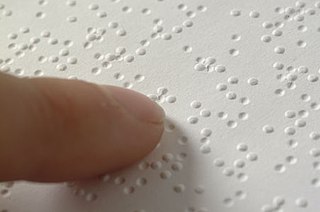
Braille is a tactile writing system used by people who are visually impaired. It is traditionally written with embossed paper. Braille users can read computer screens and other electronic supports using refreshable braille displays. They can write braille with the original slate and stylus or type it on a braille writer, such as a portable braille notetaker or computer that prints with a braille embosser.
Carl Strehl was a German educator born in Berlin.
In 1923 Bielschowsky was appointed chair of ophthalmology at the University of Breslau. While here, he published "Die Lähmungen der Augenmuskeln" (1932), an influential work on eye muscle disturbances.
Because of his Jewish heritage and Nazi persecution, Bielschowsky was fired from his position in 1934, later emigrating to the United States (1936). In 1937 he became head of the Dartmouth Eye Institute at Dartmouth College in Hanover, New Hampshire. [1] However, he died suddenly in 1940. During the same year his "Lectures on motor anomalies" was published.

The racial policy of Nazi Germany was a set of policies and laws implemented in Nazi Germany (1933–45) based on a specific racist doctrine asserting the superiority of the Aryan race, which claimed scientific legitimacy. This was combined with a eugenics programme that aimed for racial hygiene by compulsory sterilization and extermination of those who they saw as Untermenschen ("sub-humans"), which culminated in the Holocaust.
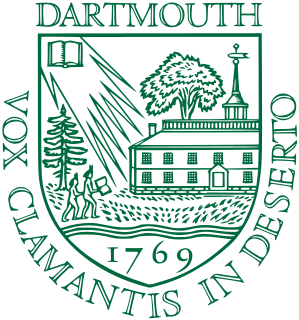
Dartmouth College is a private Ivy League research university in Hanover, New Hampshire, United States. Established in 1769 by Eleazar Wheelock, it is the ninth-oldest institution of higher education in the United States and one of the nine colonial colleges chartered before the American Revolution. Although founded as a school to educate Native Americans in Christian theology and the English way of life, Dartmouth primarily trained Congregationalist ministers throughout its early history. The university gradually secularized, and by the turn of the 20th century it had risen from relative obscurity into national prominence as one of the top centers of higher education.

Hanover is a town along the Connecticut River in Grafton County, New Hampshire, United States. The population was 11,260 at the 2010 census. CNN and Money magazine rated Hanover the sixth best place to live in America in 2011, and the second best in 2007. "This just might be the best college town," read the headline of a story in the January–February 2017 issue of Yankee.

